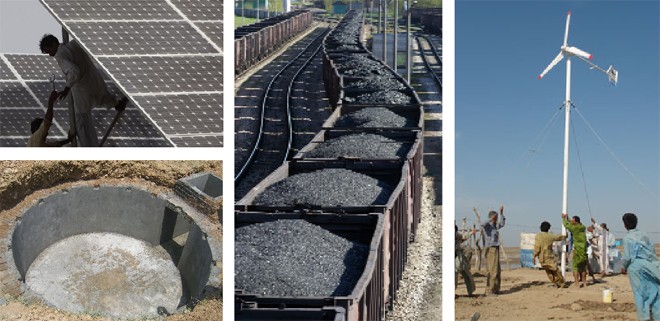
While a few projects for generating energy through alternative sources are underway in Punjab and Sindh, the governments seem oblivious of the true potential

In view of the huge gap between the supply and demand of electricity, especially during the sweltering summer days, it would do policy makers some good to consider the option of investing in alternative or renewable sources of energy generation.
But, sadly, little or no attention has been paid in the past to tapping the enormous potential of solar, wind, coal or biogas, etc, for filling the energy gap. That was partly due to sheer inefficiency and partly owing to the initial costs involved.
Only recently, a few alternative energy projects are underway in Punjab, Sindh and Balochistan. With most of them not fully operational yet, only time will tell if they are completed in time and how much energy do they actually produce.
There are also questions about their effects on the environment, especially in the case of production of energy through coal.
The Punjab government, for instance, has so far spent $5 million to install solar power infrastructure in Cholistan, capable of generating up to 1,000 megawatts of electricity in future.
This park, known as the Quaid-i-Azam solar park, is designed to reduce unending hours of load shedding which have also slowed down economic growth. The demand for electricity soars, leaving a shortfall of around 4,000 MW.
"A pilot project producing 100MW of electricity will hopefully be completed by the end of this year," says Imran Sikandar Baluch, head of the Bahawalpur district administration, in a news report. In the beginning, the cost of generating solar power from this project may be uneconomical.
In the 2014-15 budget, the Punjab government has earmarked the highest amount for investment in solar, wind and biomass energy sources. It has allocated around US$324 million to its energy development projects. More than 80 per cent of this is for generating solar power and biogas.
"There is a one-time cost of installing solar panels for a home, ranging from 500,000 to 25,00,000 depending on the size of a house, which to some clients is heavy on their purse. But it is covered in a couple of years," claims Anjum Bukhari, a dealer in solar panels in Lahore. Bukhari agrees and hopes that the costs will come down as more investors want to realise the potential.
For the solar park, Pakistan’s biggest energy project on more than 2,630 hectares, the Punjab government has allocated US$172 million for 2014-15. The park is expected to start generating 100MW of solar energy by December this year. Its capacity will be expanded to 1,000MW within the next three years, requiring a total investment of over $2 billion.
Wind power plants are being installed in Sindh province in Jhimpir, Gharo, Keti Bandar and Bin Qasim. The Sindh government was left with no option but to develop wind energy sources for southern coastal regions of Sindh and Balochistan. The projects have been undertaken with assistance from the government of China.
The Jhimpir Wind Power Plant is the first wind power plant in Pakistan. The total cost of project was estimated at US$136 million. Completed in 2002, it has a total capacity of 50MW.
The Sahiwal coal-fired power plant is expected to generate 1,320MW electricity to help overcome power crisis.
Pakistan is also trying to tap its coal reserves which lie in the deserts of Sindh. In January, Prime Minister Nawaz Sharif inaugurated the construction on a US$1.6 billion coal plant in the town of Thar. Work also started on a pilot 660 megawatt coal-fired plant in Gadani. Another 600 megawatt coal plant has also been given a go-ahead in Jamshoro.
But there is a caveat. The Jamshoro project will have an ecological cost too. The plant is to be set up at agricultural land. It is feared that hundreds of fruit and non-fruit trees will have to be cut down. As a result of cutting such a large number of trees an uncounted number of birds will also lose their habitat.
Experts claim that a number of biogas plants can run a small-size factory without interruption round the clock. Biogas projects have not been undertaken due mainly to federal and provincial governments’ indifference to alternate energy resources.
It is claimed by experts that biogas is cheap, clean and a convenient fuel. This will help the rural community to solve issue of daily cooking and slow down migration to urban areas.
Tubewells can be run on biogas. Biogas is produced by mixing dung and water in the absence of oxygen through fermentation process. Biogas can provide renewable energy from organic waste materials requiring a small labour.
In Nepal, for instance, every year 20,000 biogas plants are installed, while in Bangladesh the figure is 6,000, and in Pakistan the number of plants is 3,000.
The Punjab government has decided to spend nearly US$12 million to install 13,000 irrigation tubewells run on biogas in rural areas, which would save approximately 40 million litres of diesel annually.